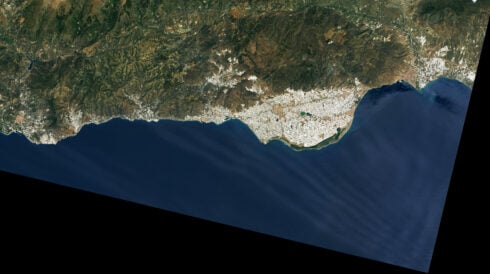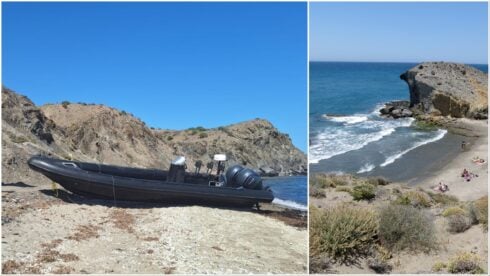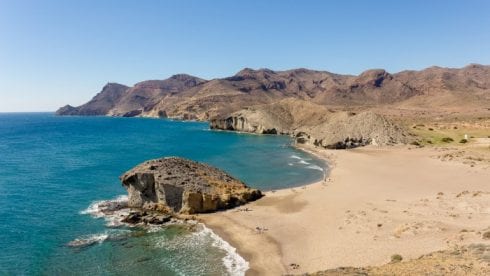IT is a grand prize but won for the wrong reason.
The notion that the Great Wall of China is the only human-made structure visible from space has long been a myth.
Despite being one of the Wonders of the World, at about 21,200 kilometres long and with its tallest towers reaching just 800 metres, the Chinese marvel is just too narrow to be seen from space.
Instead, according to NASA, the most easily discernible man-made object from Earth’s orbit is something far less wondrous: the vast expanse of the greenhouses of El Ejido on Spain’s Almerian coast.
READ MORE: World’s best chef Dabiz Muñoz to open ‘gourmet spaces’ at four major airports in Spain

But the achievement is far from a laudable one – the region represents 370 square kilometres of white plastic so bright that it stands out against the Earth’s surface, even from the International Space Station
Quite literally ‘a sea’, the region is home to thousands upon thousands of greenhouses that stretch between the towns of El Ejido and La Mojonera.
The sea of plastic even extends south to Motríl and north to Níjar.
By some estimates, Almería’s greenhouses now produce between 2.5 million and 3.5 million tons of fruits and vegetables per year.
It is enough to make them a major source of off-season tomatoes, peppers, cucumbers, and melons for households all over Europe.

But activists have long criticised the region for the enormous quantities of plastic employed, which seeps into the surrounding environment as it degrades.
“What is most visible is the field of greenhouses in southern Almería, that’s what you can see from all over the world,” said former Spanish astronaut Pedro Duque, who served aboard the International Space Station in 2003.
“The greenhouses of El Ejido are the only human construction that can be seen from space,” he confirmed to Spanish TV show Desafía tu mente.

He added the Great Wall is ‘just a wall, not that high, and made with the same materials as the earth that surrounds it.”
He dismissed his fellow astronauts who claimed ‘they know where it is and take photos there, but they don’t.’
NASA even confirmed a few years ago that the greenhouses ‘cover an area so large that they have probably even caused a localised cooling effect due to the fact that the white roofs reflect a substantial amount of sunlight.’
The region can also be seen in photos taken by NASA’s Aqua and Terra satellites.
Other large human-made structures, such as the Bingham Canyon mine in Utah and the Palm Jumeirah in Dubai, can also be seen from space, but none are as distinctive or as extensive as the greenhouses of El Ejido.
Click here to read more Almeria News from The Olive Press.








